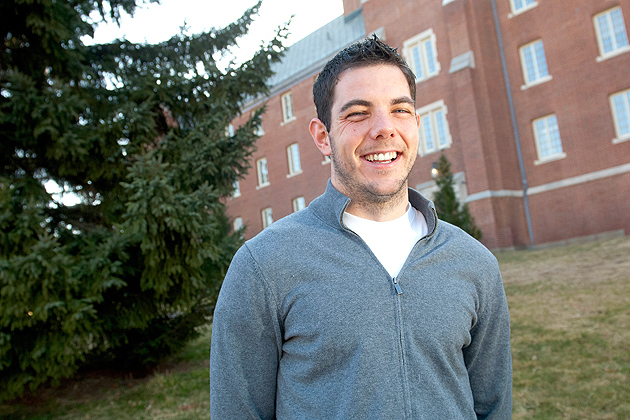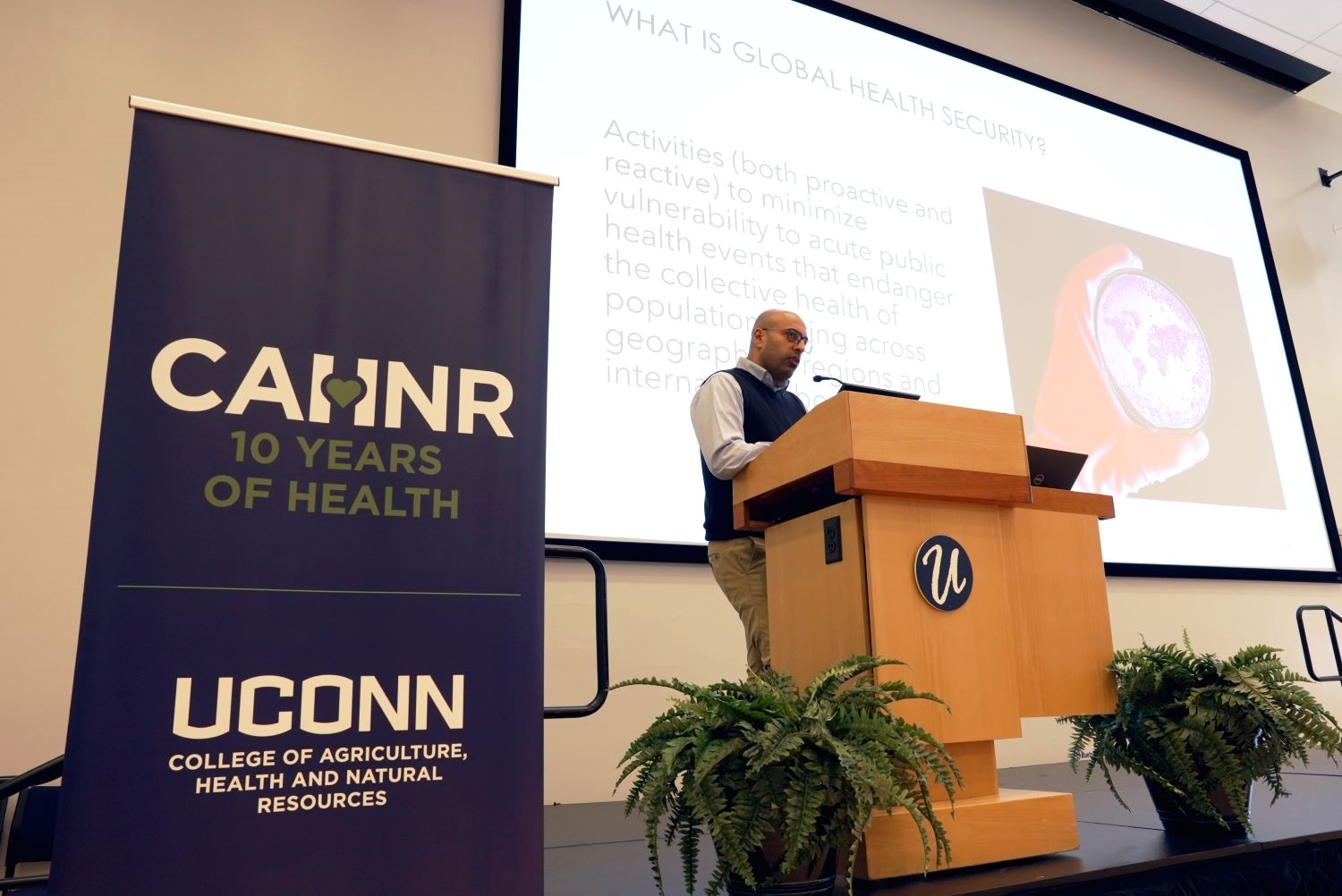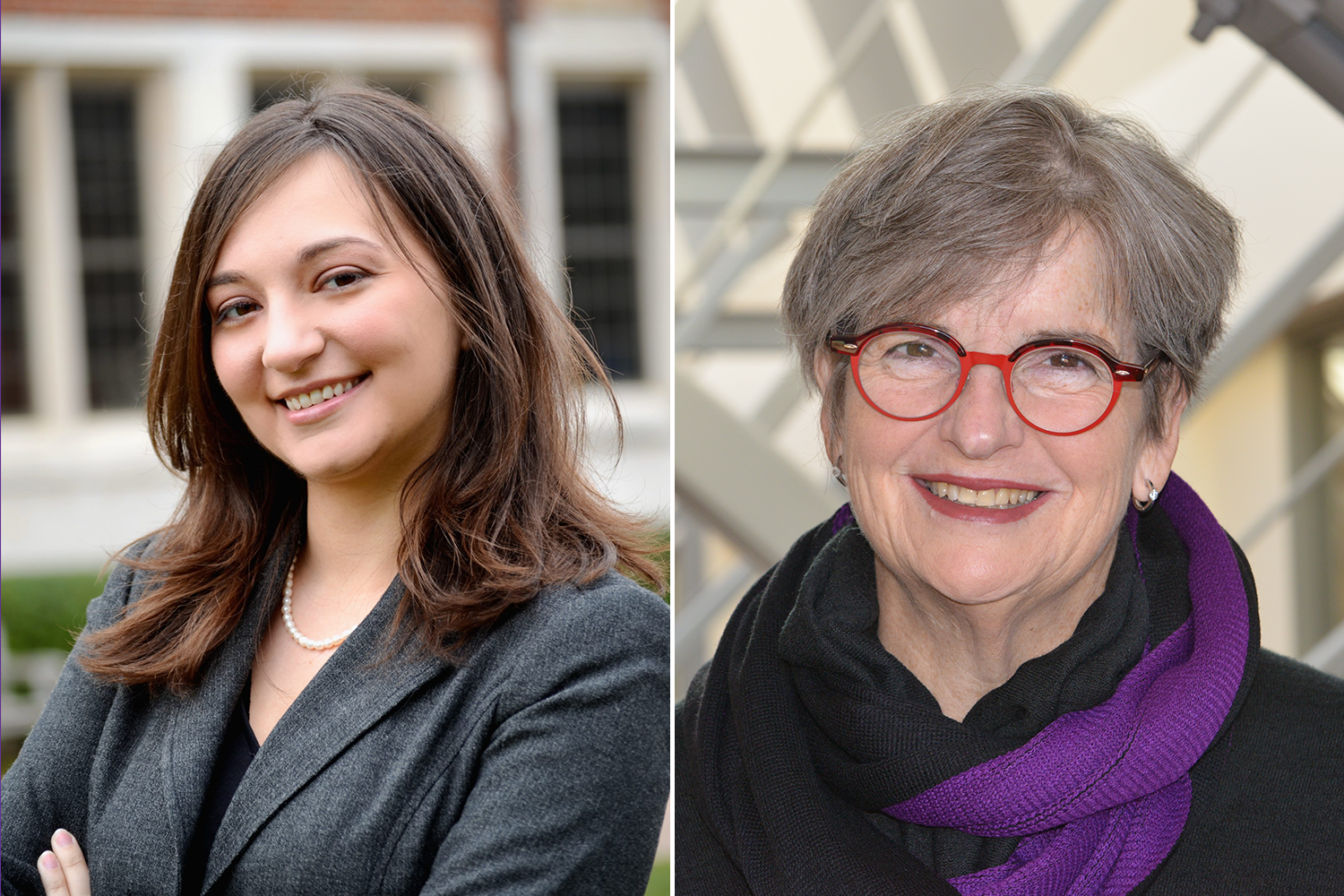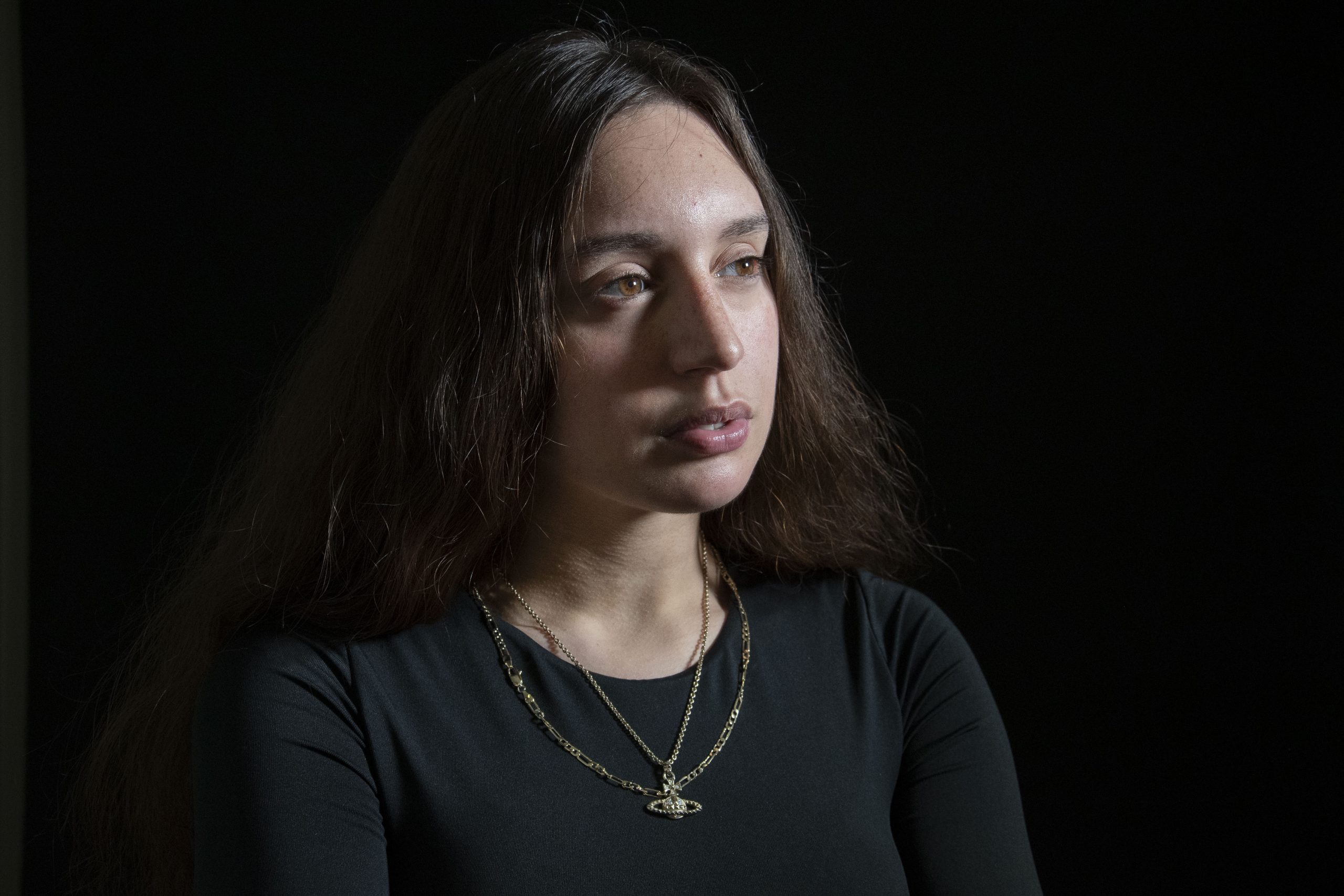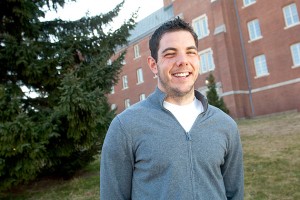
Everyone’s a little Irish on St. Patrick’s Day. But there’s one man at UConn who’s about as Irish as you can get.
Cuán Ó Flatharta, an Irishman and native speaker of the rare language Irish – called Gaelige in the language – has spent the past academic year in residence in the CLAS English department on a Fulbright scholarship. His mission: to bring Irish language and culture to UConn.
“Using the language is part of who I am,” he says. “I always knew I liked helping people, and I want to make sure Irish has a proper place here.”
Born in Dublin, Ó Flatharta was raised by parents who both speak Irish, an unusual combination at the time and still unusual today. A history of oppression while under English rule, along with the potato famine of the 1850s, left the language with few speakers.
But in the past 20 years, says Ó Flatharta, Irish has undergone a revival. Ó Flatharta works as a teacher in a Gaelscoil, one of many Irish immersion elementary and secondary schools established to revive the language and its culture. Today, estimates of native speakers max out at 80,000 people, or about four percent of the population of Ireland, Ó Flatharta says.
“The majority of these students have no Irish at home,” says Ó Flatharta. “But their parents are choosing the Gaelscoil because they’re great schools and the kids get to learn through Irish.”
The country also celebrates its heritage with a Week of Irish leading up to St. Patrick’s Day, when the language is spoken on TV and the radio to give it more exposure.
“People are really trying to use the language more,” says Ó Flatharta. “Today, you can get jobs through Irish, like I have. It gives you opportunities that may not have been there before.”
Bringing Irish to UConn
Over the past year at UConn, Ó Flatharta has taught two courses in Irish language, the second of which was so popular it was over-enrolled.
“It’s rare to have Irish classes in the first place, let alone ones that are so popular,” he says. Especially in New England, he notes, many people have Irish connections or an Irish background, so the interest is already there under the surface.
Ó Flatharta has also been instrumental in starting UConn’s Irish Language Club. Senior Tiffany Touma says that his influence helped them really immerse themselves in the language.
“We learn what feels like an enormous amount of Gaelige in a short amount time, but what’s more, we all have a very fun time doing it.” says Touma, who leads the club. “Cuán’s dedication and willingness to go the extra mile has ensured interest, passion, and further pursuit of Irish education.”
But perhaps the biggest Irish tradition that Ó Flatharta has helped bring to UConn is its new athletic club: the ancient Gaelic sport of hurling.
“They say it’s the fastest field sport in the world,” Ó Flatharta says with a grin. “It’s like baseball, lacrosse, hockey, and soccer all in one.” The sport is just as big – if not bigger – than soccer in Ireland, he says.
The Husky Hurling club has played other teams across the U.S. over the past year, and has made headlines in Irish media for being one of the up-and-coming teams in America. Especially around this time of year, says Ó Flatharta, the sport reminds the Irish of their heritage.
St Patrick’s Day, There and Here
The surprising thing about St. Patrick’s Day, says Ó Flatharta, is that it didn’t start out as a major celebration in Ireland. Although St. Patrick is the patron saint of the very Catholic nation, the first St. Patrick’s Day parade took place in New York in 1762.
“When the Irish went abroad, mostly to America, they wanted a way to celebrate their heritage,” Ó Flatharta says. “So at first, St. Patrick’s Day was bigger around the world than it was in Ireland.”
Today, Ireland begins its St. Patrick’s Day celebrations a week in advance with the Week of Irish. On the day, parents take their children to look for shamrocks, and some people pin their shamrocks to their shirts. Every town, large or small, has its own St. Patrick’s Day parade, and afterwards people flock to local and national hurling and soccer matches.
Then, of course, people go to pubs. While Ó Flatharta confirms that the Irish spirit of choice is usually Guinness, along with Baileys and Irish whiskey, he gives a spirited challenge to the idea that all Irish people drink a lot.
“Show me any society that doesn’t drink!” he says.
And although he is excited to experience how Americans celebrate St. Patrick’s Day on Saturday, there is at least one tradition he dispenses with summarily.
“We don’t eat corned beef and cabbage at home,” he says. “It’s just not a St. Patrick’s Day tradition.”
After his year in the States, Ó Flatharta hopes that the Irish studies connection he has made will continue to flourish at UConn. The English department will have a standing Irish Fulbright scholar visit each year, fleshing out the courses that Ó Flatharta developed and branching out into others.
So with a little luck, that Irish connection will endure, says Ó Flatharta – who personally believes that four-leaf-clovers are real.
“Oh yes, four-leaf clovers exist,” he smiles. “Just not on the street where I grew up.”
